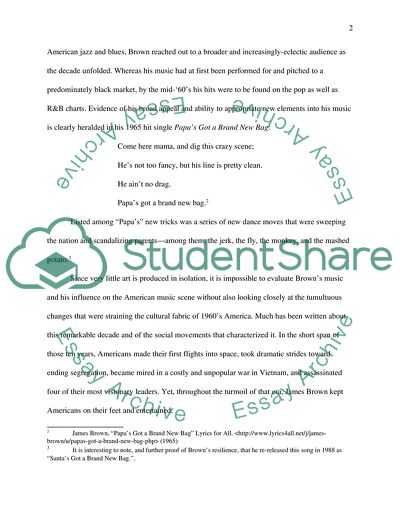Cite this document
(“James Brown in 1960s America Essay Example | Topics and Well Written Essays - 1500 words”, n.d.)
James Brown in 1960s America Essay Example | Topics and Well Written Essays - 1500 words. Retrieved from https://studentshare.org/music/1535473-james-brown-in-1960s-america
James Brown in 1960s America Essay Example | Topics and Well Written Essays - 1500 words. Retrieved from https://studentshare.org/music/1535473-james-brown-in-1960s-america
(James Brown in 1960s America Essay Example | Topics and Well Written Essays - 1500 Words)
James Brown in 1960s America Essay Example | Topics and Well Written Essays - 1500 Words. https://studentshare.org/music/1535473-james-brown-in-1960s-america.
James Brown in 1960s America Essay Example | Topics and Well Written Essays - 1500 Words. https://studentshare.org/music/1535473-james-brown-in-1960s-america.
“James Brown in 1960s America Essay Example | Topics and Well Written Essays - 1500 Words”, n.d. https://studentshare.org/music/1535473-james-brown-in-1960s-america.


